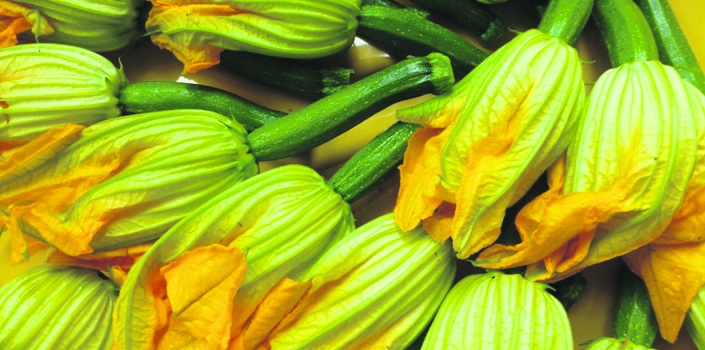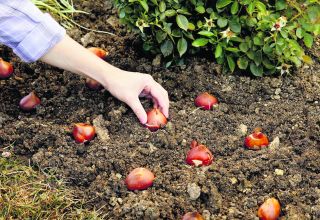The lengthening days make this the perfect time to set up the garden for the rest of the summer. Here’s what now might need doing in the garden.
Bed of roses
Foliage-feed the first new growth on the roses and continue to do so every three to four weeks to avoid the use of toxic rose sprays. An organic tonic is the best option for this time of the year which will help to ward off blackspot and mildew which will be lying dormant and ready to pounce. A handful of slow-release organic blood, fish and bone spread evenly about the roots will set up the health of your plants.
Plant dahlia tubers
Bringing dahlias in for the winter doesn’t just protect them against frost. It also allows them to dry out properly, and helps you bring them on a bit earlier. They’re now ready to be planted.
Give tubers a sprinkling of water in early spring, and they’ll start to produce young shoots in April. Discard any tubers that look diseased or damaged.
Dig a planting hole; making sure it isn’t too deep. The shoots are still delicate, and you don’t want to damage them.
Gently pour coarse sand over the tubers; this prevents them from rotting and it’s also a great slug repellent.
Backfill with soil and add a ring of sand to mark the planting spot. It’s also another useful means of combating those pesky slugs and snails.
Write labels for each dahlia cultivar and place them correctly next to each plant; a foolproof way to remember what you’ve planted in a few months’ time.
Toughen up greenhouse plants
Start hardening off greenhouse grown plants to give them a chance to toughen up and make them better able to withstand pests and weather. Choose a clement day to begin and start by putting them outside, out of cold winds, strong rain or sun and somewhere out of reach of marauding slugs. Allow a week or two before planting out, once all chance of frost has passed.
Herbal power
Plant herbs like rosemary, thyme and oregano. Any that have become leggy can be trimmed to suit the space. You can cut rosemary into the wood if it has become wild and straggly. If you grow on clay or badly draining soil it’s a good idea to put some grit in the base of the planting hole to help with drainage.
Colourful courgettes – it is time to get courgettes under way either in a heated propagator or just covered in the greenhouse Many gardeners grow them as much for the flowers as for the fruits, and so grow at least ten to allow for frequent picking. When it comes to varieties try striped ‘Striato di Napoli’, spherical ‘De Nice a Fruit Rondo’, golden ‘Soleil’, deepest green ‘Nero di Milano’ and pale and bulbous ‘Trieste White’.
 Sweet peas can be sown this month
Sweet peas can be sown this month
Sow seeds of sweet peas into deep pots or roottrainers as they dislike disturbance to their roots. Sweet peas will sprout in 21 to 30 days if the soil temperature is 38° Fahrenheit (3.3° celsius) and the germination rate, or number of seeds that do sprout, will be low.
Or, instead, look out for young plants in nurseries and garden centres. Check whether they are grown for scent or for cutting. Some longer stemmed varieties may smell less strongly.
Cut off any frost damaged leaves or tips from flowering shrubs to prevent further die back.
 No-dig, no fuss
No-dig, no fuss
For a quick turnaround, why not start a no-dig bed. Lay thick cardboard over the ground and top it with a thick mixture of topsoil and compost, which you can plant into straight away. The popular No Dig method of cultivation can be used for two purposes: to provide a rich soil to grow in, and to clear a weed-infested growing area. Both instances require a great deal of surface mulch (well-rotted manure or compost). In principle, by avoiding digging you will not be disrupting the soil life, nor will you be exposing the soil to weed seeds. Instead the existing weeds are in darkness, which causes them to weaken and die.
Time for TLC for your lawn
This is the perfect time to give your lawn a bit of care and attention.
First rake off loose thatch and moss. This enables the grass to grow healthily during the season. Next, either using a proprietary aerator attachment, or a garden fork make holes across the lawn to help aerate the soil and prevent compaction. If you’re using a fork dig to a depth of about three to four inches and wiggle the tines to remove. Sprinkling sand into the holes also helps.
 Once you have removed the weeds and moss to your liking topdress the lawn with a feed and conditioner.
Once you have removed the weeds and moss to your liking topdress the lawn with a feed and conditioner.
If there are any bald patches you can resow these now. Small patches can be targeted with special feed and seed mixtures. You can buy mixes designed for high use areas and for shaded areas. Some mixes even contain neutralisers to prevent pet urine marks.
Tidy the edges of the lawn where they meet flower borders. First mark a straight line using string held taught between two posts. Using a half moon lawn edger, follow the string, cutting away ragged edges and throw these away. This isn’t just a job for houseproud gardeners. Cutting the grass away prevents weeds and grasses growing into flowerbeds.
Herbal power
Plant herbs like rosemary, thyme and oregano. Any that have become leggy can be trimmed to suit the space. You can cut rosemary into the wood if it has become wild and straggly. If you grow on clay or badly draining soil it’s a good idea to put some grit in the base of the planting hole to help with drainage.
Other jobs
- Start staking delphiniums and tall perennials. They’ll soon be tall enough to be knocked over by wind or heavy rain. If you can get your hands on some hazel or silver birch pea sticks, use them to weave a basket, which works just as well but looks so much nicer than metal or plastic.
- Plant up hanging baskets and containers. Keep them under cover to grow on until the frosts have passed. Go for something exceptionally long-flowering such as Argyranthemum ‘Cherry Red’ or Verbena ‘Homestead Purple’.
- Keep an eye on permanent or spring plantings in containers and water if necessary.
- Feed lawns and treat for moss. Try to work out the reason for the moss. Is the grass too shady, or the soil too acid or compacted? Aim to sort the problem out now for a lovely lawn all summer.
Last chance to…
- Deadhead daffodils but let the leaves remain
- Boost pre-spring growth in pots and borders with blood, fish and bone or other fertiliser
- Clear diseased rose leaves that have fallen to the ground or remain on the bush and remove from the garden
- Prune buddleia before they fully start into growth











